R410A vs R134a, R410A vs R134a, R410A vs R134a, R410A vs R134a
There are added benefits to using environmentally friendly products, giving us that peace of mind and the luxury of keeping cool on hot days.
We now have to pay attention to what kind of refrigerants are being used as one can’t outweigh the other.
Thus, more sustainable options have been developed.
R410A vs R134a

R410A
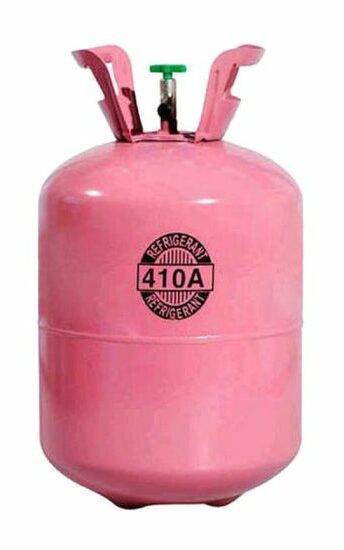
R134A
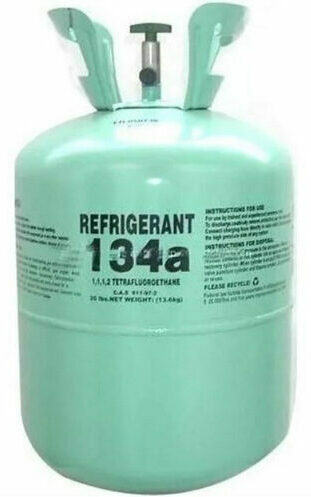
Pros
R410A
Thermal stability
Residential & commercial use
Safe to use, store, and transport
Ozone depletion potential is zero
Straightforward system charging
Most service technicians are familiar with the R410A, which means they have the knowledge and tools
R134A
Non-toxic
Non-flammable
Good dielectric properties
Used in the Automotive industry
Ozone depletion potential is zero
Cons
R410A
Costly
Global warming potential
Acid build-up due to the polyester oil
Designed systems require thicker-walled tubing
Can’t be recycled because it’s a blend of refrigerants
Will need a compressor that can handle the high pressure
R134A
Global warming potential
Draws double the power to provide the same amount of cooling
Best For
R410A
Mobile technicians, cooling/air-conditioning companies
R134A
Automotive factories & workshops
What is R410A Refrigerant?
The R410A is a member of the hydrofluorocarbon (HFC) class of refrigerants. It operates at a higher pressure than many other refrigerants, replacing the R22 applications.
Refrigerants power all air conditioning, refrigeration, and freezing technology. They are compounds that exist in a fluid or gaseous state. They work by absorbing heat from the environment, combined with other components like compressors and evaporators to create cool air.
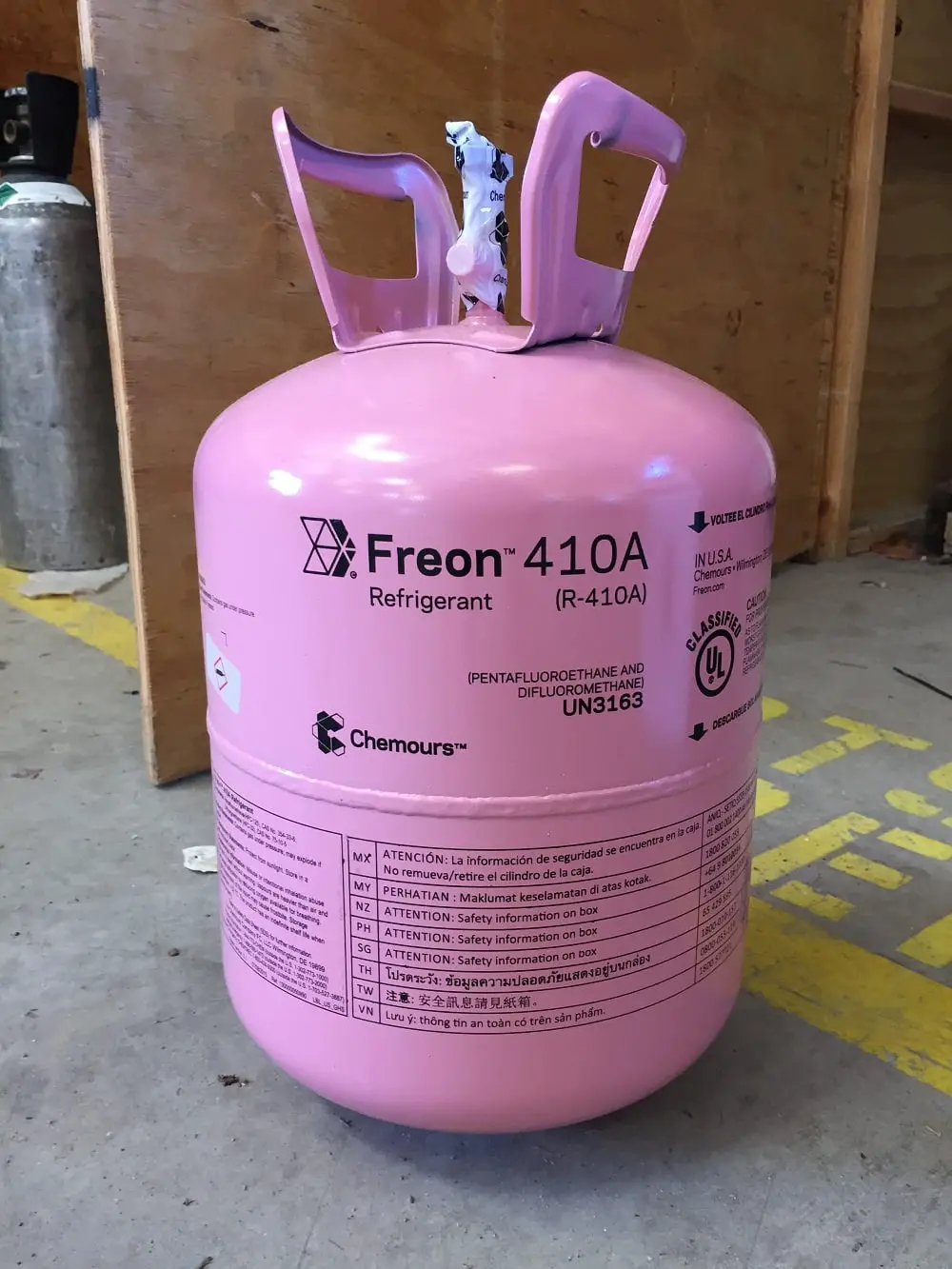
R410A’s low glide makes it suitable for some centrifugal compressors and operates in low-temperature applications. Systems designed for R410A have the advantage of their ability to use smaller components under a higher operating temperature, therefore causing a temperature change a lot quicker than their predecessors. This makes it a critical refrigerant for domestic and light air conditioners.
It releases more energy, enabling your air conditioner compressor to run cooler, which reduces the risk of the compressor burning out from overheating. It’s also functioning at high pressure, and engineers are building new compressors to withstand more significant stresses.
What is R134a Refrigerant?
R134A is a HFC that doesn’t contain chlorine. It’s used in a gaseous state, working under pressure in the cooling unit. The refrigerant absorbs heat while circulating throughout tubes in the system.
R134A is used in various cooling air conditioning applications and was developed to replace R12 in cars. People use it for medium-temperature systems in residential buildings and commercial businesses. They also use it in homes, mobile refrigeration units, and commercial units like cold case units found in grocery stores.

You can use IR410A in its pure form or as a blend. Many HFC refrigerant mixtures commonly contain this element, and it can also find use in applications requiring a propellant. People use it in water and liquid cooling solutions and heat pumps.
It has zero Ozone Depletion Potential and a Global Warming Potential of 1430. As with R410A, it uses a polyester oil commonly known as POE.
Relevant Characteristics Between R410A and R134a
R410A vs R134A
Compare by tapping or clicking below!

Chemistry
R410A
(CH2F2,called R-32) & (CHF2CF3,called R-125)
R134A
1,1,1,2-Tetrafluoroethane
Function
R410A
Cooling of bigger, commercial systems
R134A
Cooling of smaller compact systems
Performance
R410A
Higher system efficiency. The subcooling effect plays an important role.
R134A
The compressor used with R134A will draw more power to provide the same amount of cooling.
ODP
R410A
0
R134A
0
GWP
R410A
2088
R134A
1430
Legality
R410A
Require a license to use to charge a system. Being phased out by 2024.
R134A
Need a license to purchase.
Similarities and Differences
The world of refrigerants can be very confusing at times, with all the necessary changes to legislation. R410A and R134A are vastly different but have some similarities, as we’ll discuss. Hopefully, this discussion can clarify the options and their uses.
R410A and R134a Differences
R410A and R134A are used in vastly different cooling systems, but have essentially been designed for the same purpose: to be more beneficial to industry and the environment by replacing more harmful chemicals. Although they both have practical factors, neither is 100% safe.
Industry
Manufacturers admit R410A can cost up to 15% more to build and was developed mainly for commercial and residential air-conditioner units. In contrast, R134A has been designed for smaller systems such as the automotive unit. R410A has a global warming potential of 1890, while R134A has a Global Warming Potential of 1340.
Operating
R410A is a blend of two gases, R32 and R125. They developed it to replace R22 in home air-conditioning units.
It can reach a pressure of 200 psi at room temperature and get an operating pressure of 340 to 390 psi or higher.
Developers created R134A as a pure gas to replace R12. It can reach a pressure of 70 psi at room temperature and can reach operating pressures of 250-275 psi.
R410 boils at -61.9 degrees Fahrenheit. R134AA has a boiling point of -14.9 degrees Fahrenheit.
R410A distribution is a little better than R134A when the inertia is higher. So at low qualities or churn flow, the liquid R410A reaches the top tubes of the system.
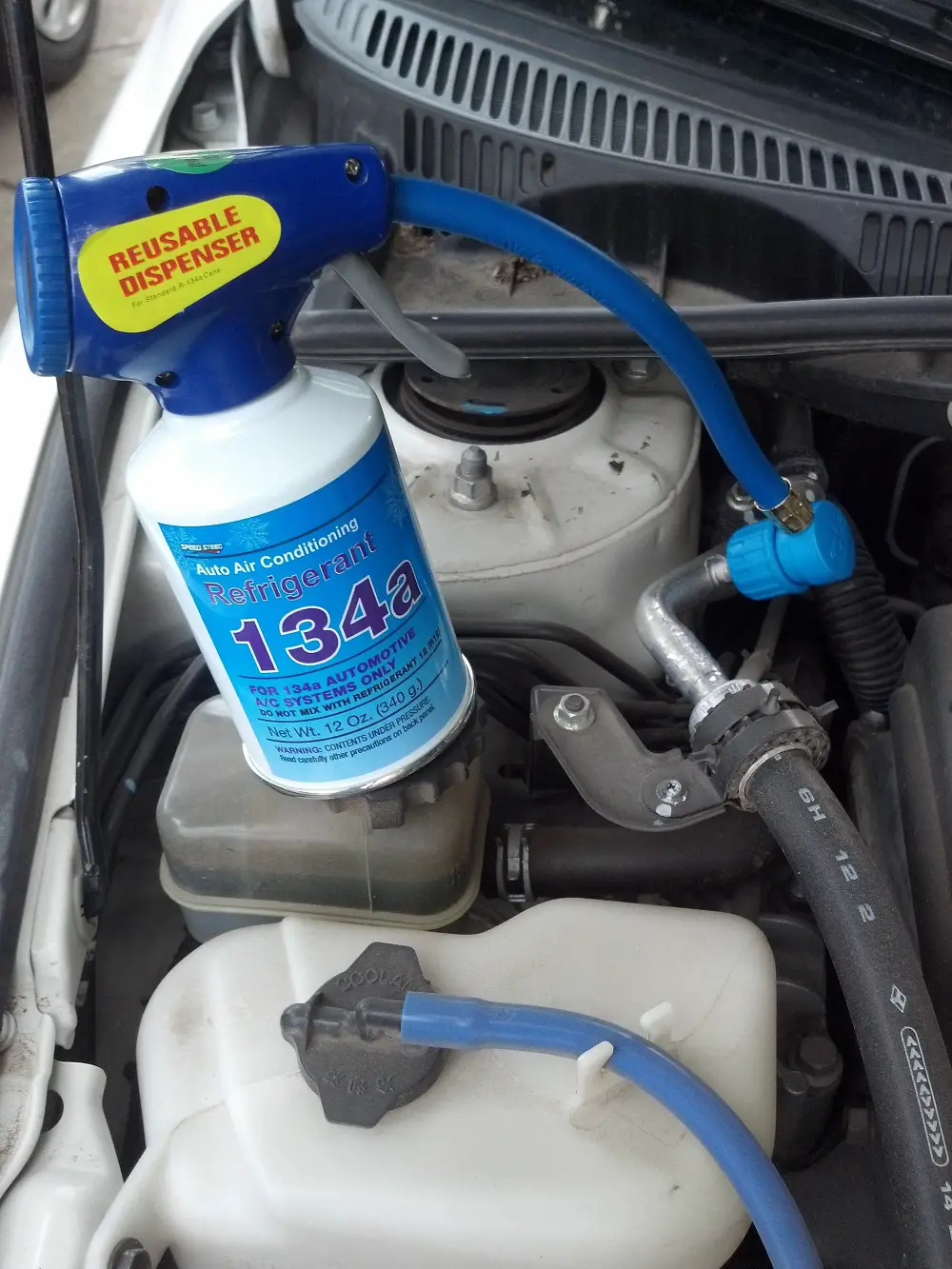
At high qualities or semi-annular flow, the liquid R410A bypasses the system’s bottom tubes. So in this case, it has a worse distribution than R134A.
R410A is a highly efficient refrigerant and has been found to result in energy savings between 2% – 5%. This energy efficiency allows for compact designs.
R134A has good dielectric properties, which means it has high thermal stability, low boiling point, and is chemically inert towards the specific system’s construction materials. It’s non-toxic and non-flammable. In its gaseous state, it can be used to prevent electric discharges.
R410A and R134a Similarities
Refrigerants serve a similar function—being circulated—regardless of the specific system used. R410A and R134A are two refrigerants used in the home or commercial air-conditioning units and automotive air-conditioning units, respectively.
Environmental Impact
R410A and R134A are environmentally conscious refrigerants known as HFCs. Both were developed as substitutions for CFC gasses used in refrigeration before the Montreal Protocol in 1987. HFCs like R410A and R134A are chlorine-free, making both non-ozone depleting gases. It may lend to the (ASHRAE) safety rating of A1; however, both are still harmful to the environment.
Ban
The U.S has imposed bans on Global Warming Potential (GWP) gases. Environmental Protection Agency, which includes a host of high GWP refrigerants such as R410A and R134A. The ban took effect on 1 January 2021, banning the use of GWPs in new domestic machines. You can still use R410A and R134A in existing machines up to 1 January 2024.
R410A vs R134a Environmental Impacts
Many refrigerants cause extreme damage to the ozone layer, while there are other types that are potent greenhouse gases. As of 2020, new regulations limit the types of refrigerants that can be used in chillers. One of the replacements is the R410A.
The R410A is a blend of difluoromethane and pentafluoroethane.
The R410A and R134A have a common harmful effect on the ozone layer, earning them a safety rating of A1. They don’t have chlorine in their makeup.
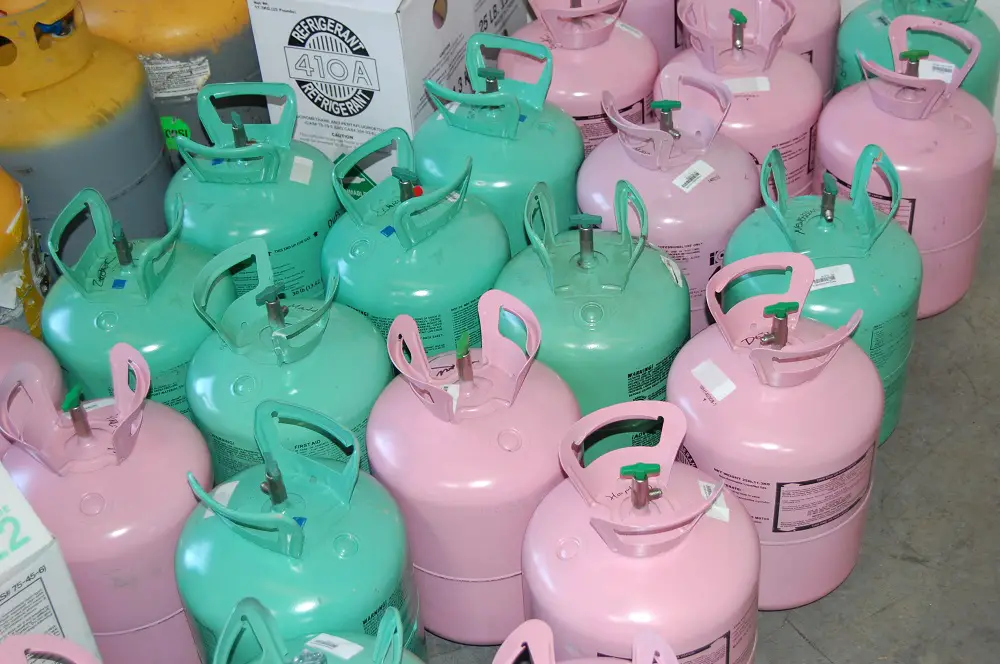
They do, however, have a high greenhouse effect of 2088 and 1430, respectively.
Did you know that 1 kg of R410A delivers a similar greenhouse effect as two tones of carbon dioxide, equivalent to operating your vehicle for six months? The U.S. will ban many common refrigerants, such as R410A, R134A, and R407C, from being used in new chillers from 1 January 2024.
Advantages of R410A Refrigerants
R410a is a replacement refrigerant that contains no chlorine, making it a safer choice for your home or business. Designed to replace R22 refrigerant in some home or commercial air-conditioning units, it’s been proven to have a far superior efficiency or output.
It’ll give the user greater comfort, reliability, and cost-effective maintenance. These factors are based on the positive long-term savings both for the user and the environment.
It’s a safe option because it’s non-flammable. It’s also non-corrosive to the tubing and castings within your unit. You can safely use it alongside copper, brass, or steel tubing.
R410A is presently the best replacement refrigerant for commercial and residential HVAC systems. It absorbs and discharges heat better than its predecessors, the R22 refrigerant, making it more energy-efficient. In all newly-manufactured air conditioning units, you can use R410A.
The R410A refrigerant is a less expensive option to recharge a system with because it’s readily available, and not much retrofitting is required to your older system. It also works quickly because there are more fluid and a bigger compressor. Thus, it has a better ability to change temperature.
R410A would be a wise choice for replacing older cooling units or as an option when deciding on a new unit. You can use it for commercial or residential purposes.
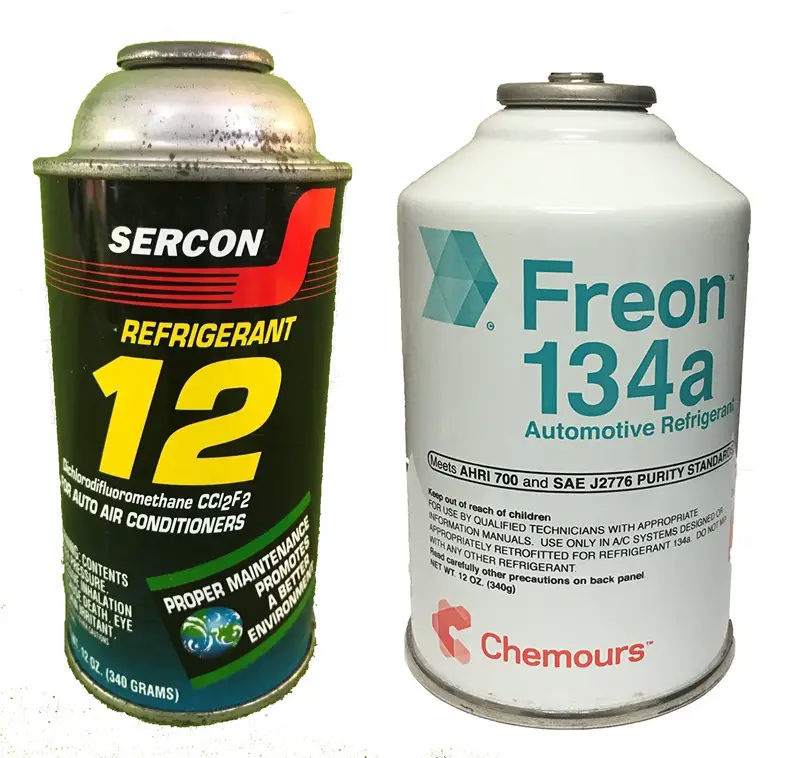
Advantages of R134A Refrigerants
The R134A replaces R12 but isn’t considered a direct replacement. A few modifications need to be made to the system under optimal operation and can reduce direct refrigerant emissions. It’s non-flammable, non-corrosive, and non-explosive and has toxicity within limits and good chemical stability.
People commonly use it in a wide range of refrigeration and air conditioning applications. The higher installation cost notwithstanding, people use it in both domestic and commercial units. An example would be centrifugal chillers in light air conditioning, automotive air conditioning, and industrial applications.
Lower pressure allows for the use of lower-horsepower compressors, reducing operating costs. This is why some suppliers favor it for the most extensive central chillers.
The manufacturing industry uses it in plastic foam blowing, and the pharmaceuticals industry uses it as a propellant. An ideal option for a company that may need only a partial operation area to be cooled would also be. As a non-professional consumer, R134A would be suitable for replacing older automotive air-conditioning units or possibly in a small mobile cooling unit.
What About R32?
The R32 is a new refrigerator that’s getting a lot of attention. It efficiently carries heat and has a lower environmental impact. As the R32 is a single component, there are many benefits.
Environmental
R32 has proven to be very environmentally friendly with a GWP of 675, roughly 30% lower than R410A and R134A. It has an Ozone Depleting Potential of 0, making it a doubly effective option. It’s also easier to recycle than the R410A, making R32 beneficial to the refrigeration industry in their efforts to find more sustainable solutions for the foreseeable future.
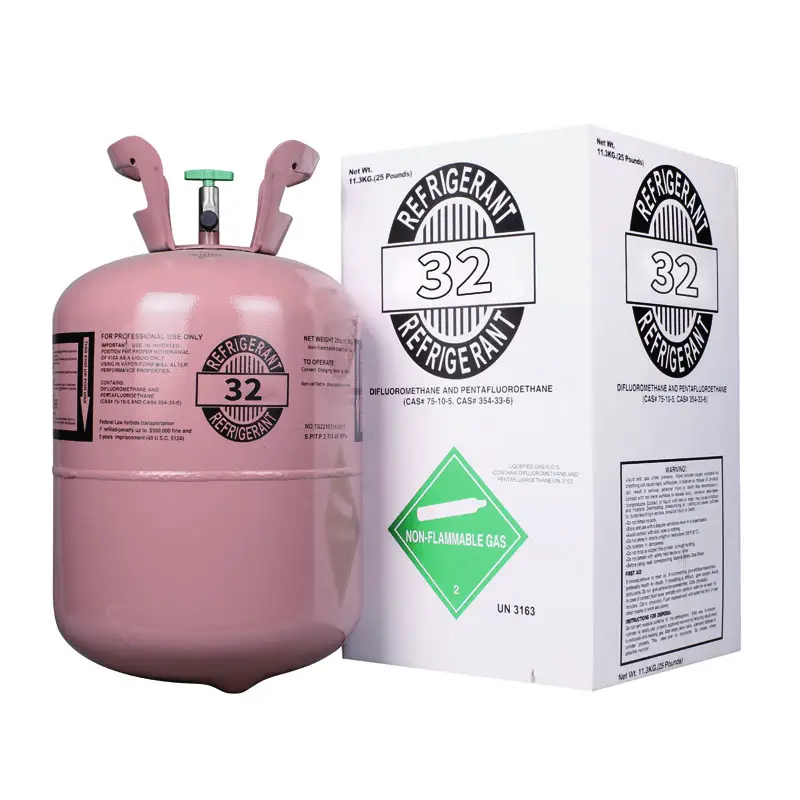
Industry
R32 is the ideal solution for businesses and buildings that require air conditioning as it contributes to lowering carbon footprint. It uses up to 20% less refrigerant than the R410A, making it more efficient while costing less to operate.
Environmental and cost benefits are compelling reasons for R32 becoming the standard refrigerant for split-type air conditioning systems.
R32 is already on the market with manufacturers selling the R32-ready systems at Mitsubishi Electric. This includes the M Series and Mr. Slim “power inverter.”
For manufacturers, this means continued innovation with new developments. Manufacturers already invested in the future of the product can save on costs as R32 takes over from phased out HFCs by 2024. All these factors provide a real opportunity for the HVAC industry.
R32 is not perfect, but it’s a stable and safe alternative. The operating pressure and application are nearly the same as the R410A and R134A. They can potentially produce 3.5 x R32 units instead of 1 x R410A units to the manufacturers, continuing growth while meeting strict EU limitations on CO² impact.
Bottom Line
A safe choice for your home or business would be the R410A refrigerant as it contains no chlorine and produces a better and safer quality of cool air. The R410A’s GWP is at 2088, which is the best. We’ll continue developing and evolving to improve these levels, and we’ll phase out and replace it with the R32.
The R134A is a compact light air conditioning automotive solution. They will also phase out and replace this with R32, which has a GWP of 1430.. Laws may change regularly but for positive future effects.
People Also Ask
There are still many questions that people have about them. Here are a few of the more common questions.
No, they run at different operating pressures and temperatures. The distribution is better in the R410A than the R134A when the inertia is higher. In smaller air conditioning units, people use R134A, and in larger domestic units, they use R410A.
Due to the different pressures, it can have an adverse effect on the units; it reduces efficiency, performance, and longevity. Reduced cooling, possible compressor damage, metering device malfunction, inadequate oil return to the compressor, and safety issues cause other effects
Yes, although the designers explicitly designed the R134 to replace R12 and intended it for use in smaller air conditioning units, such as those in vehicles. People also use it in mobile refrigeration units, home appliances, and commercial units like cold cases in grocery stores
See More
Yes, they will phase it out and replace it with a pure, single-component refrigerant called R32, which has one-third the GWP of R410A.
There are bans in place regarding the use of R134A as a refrigerant in new machines to a degree.The ban came into effect on 1 January 2021; however, it will phase out by 1 January 2024. R32 will eventually replace all other GWP gases
R410A is a refrigerant classified by ASHRAE as an A.1. coolant gas. The A rating stands for non-toxic and the 1 rating stands for non-flammable. No certification or licensing is needed to purchase this R410A, which is also sold under numerous trademarked names like AZ-20, Forane 410A, Ecofluor R410, Genetron R410A, Suva 410A, Puron.
